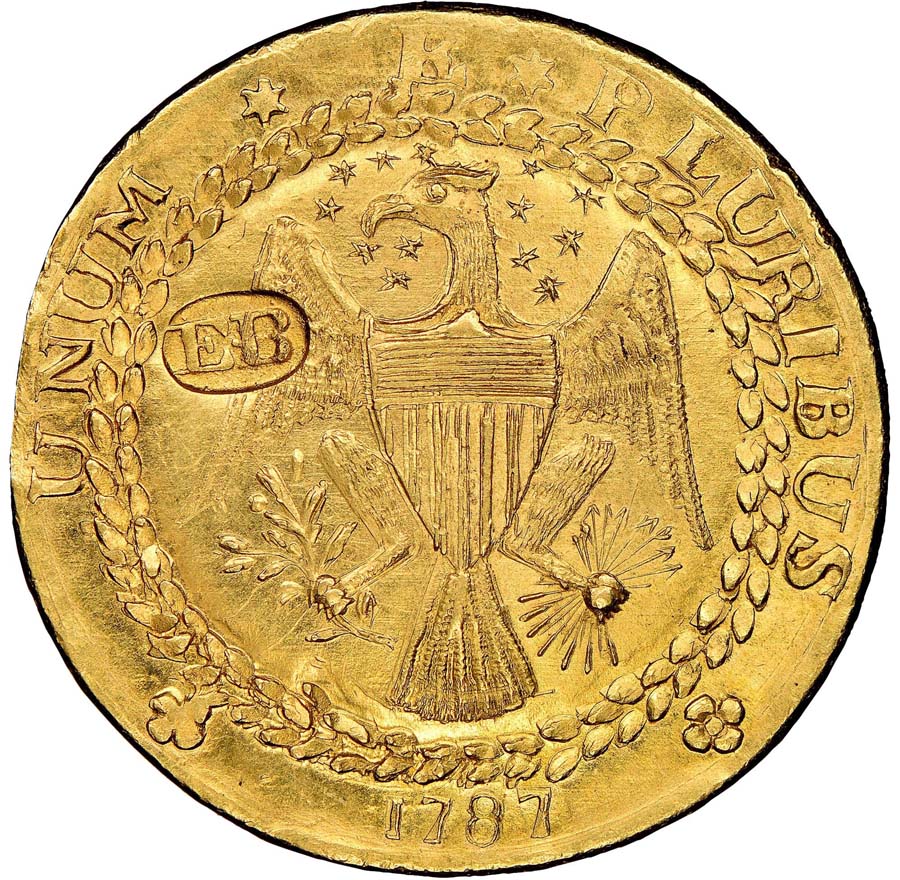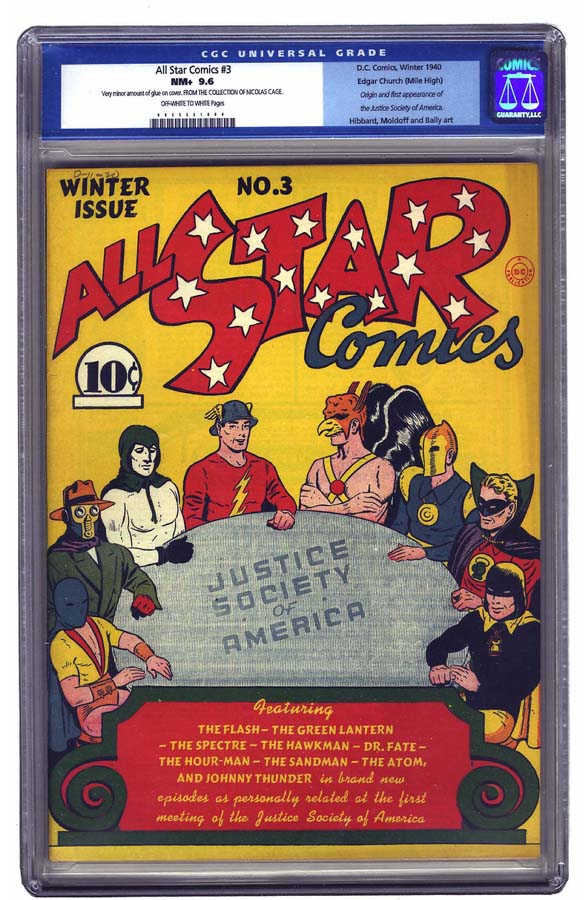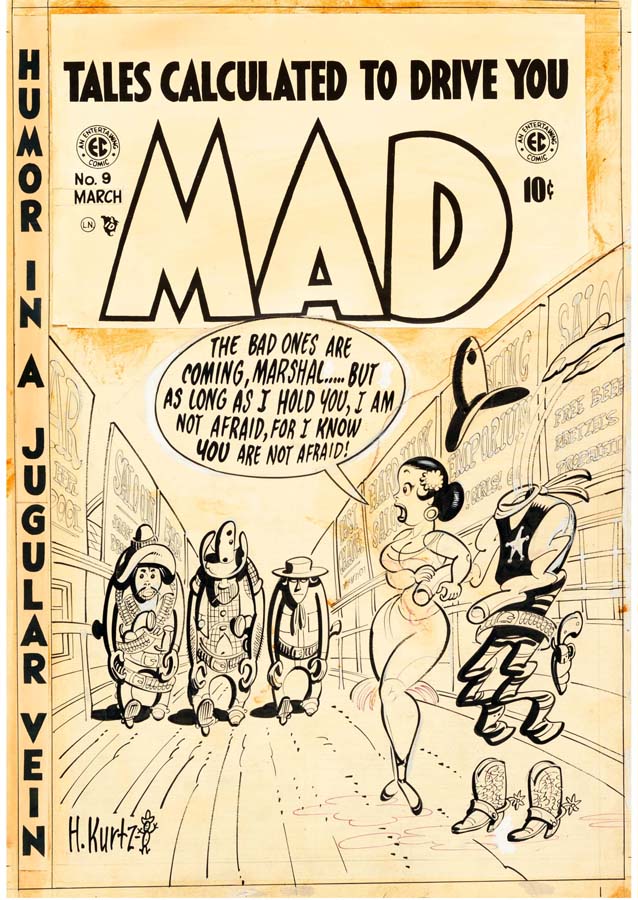THE LIFELONG COLLECTOR AND ENTREPRENEUR SHARES HIS THOUGHTS ON THE EVER-EVOLVING COLLECTIBLES MARKET
Interview by Rhonda Reinhart
At just 11 years old, Jim Halperin had already found his calling, although he hadn’t realized it yet. Back in the early 1960s, the Boston native was a fledgling but eager comic book dealer and fanzine publisher. But by 1968, he had turned the page on comics and started dealing in stamps and coins instead. That teenage pivot turned into an early withdrawal from Harvard University and a full-time numismatic career.
Halperin launched New England Rare Coin Galleries in 1971 and 11 years later teamed up with his friend and former rival Steve Ivy to form Heritage Rare Coin Galleries and Heritage Numismatic Auctions. Over the next few years, Halperin started Numismatic Certification Institute (NCI), the first privately owned collectibles grading service; wrote a book called How to Grade U.S. Coins; became an early shareholder in Professional Coin Grading Service (PCGS) and Numismatic Guaranty Company (NGC); and earned a reputation as possibly the most successful American coin dealer of the 20th century.
Jim Halperin co-founded Heritage Auctions and oversees the company’s Comics & Comic Art department. Photo by Elizabeth Lavin.
But even though the numismatic world is where Halperin made his name, his career came full circle when Heritage launched its first Comics & Comic Art auction in 2001. Once again, Halperin was immersed in the collecting category that first captured his attention as a bright-eyed adolescent. Today, he still oversees Heritage’s Comics & Comic Art department, a cornerstone of Heritage Auctions’ worldwide success and explosive growth over the past two decades.
Below, Halperin looks back on Heritage’s early days, looks ahead to what might come next and explains how Mad magazine helped shape generations.
Take me back to when you and Steve Ivy first joined forces. What were your goals back then?
At the time, we were coming out of a horrible bear market for coins, which was finally starting to turn around. I was, to put it charitably, insolvent. My goal was to earn enough money to pay all my creditors and keep my reputation intact. Steve wrote out a plan on a yellow pad – his vision of what would happen financially if we combined forces. He showed me numbers that looked about right. As it turns out, he was a bit conservative. We did better than he projected for the first few years, and even after that, our business kept growing. But when I signed our partnership agreement I was completely focused on paying my creditors in full, with interest, as soon as possible and, only then, on growing Heritage.
Could you have imagined then that Heritage would become one of the largest auction houses in the world?
Our auction companies were an afterthought. They were tiny, even for coin auctions. So, to answer your question, not even a gleam in my eye. But I knew that Steve and I would invent, reinvent and constantly refine our businesses.
Halperin and business partner Steve Ivy founded Heritage as a coins auction house, and the company still sees extraordinary success with the category today. One example is the $9,360,000 fetched in January 2021 for the finest-known 1787 New York-style Brasher doubloon.
What was the single biggest factor that led to Heritage’s success?
In my opinion, the fact that Steve and I had complementary talents, and although we often disagreed, we were never at cross-purposes. Steve was a great businessman, probably the best in the business. I was the highest-earning trader of U.S. coins. So he let me run our coin trading with 100% autonomy, and he took care of everything else, at least at the beginning. And together we hired and nurtured an amazing array of numismatic and business talent, including Marc Emory, who came with me from NERCG to Heritage, then Greg Rohan and Paul Minshull. Meanwhile, one of my many experiments, NCI, which Mike Sherman helped me design and operate, set the stage for the 1980s’ biggest change in the coin business: certified grading.
And grading changed the game for everybody.
Yes, PCGS and NCG followed suit with even better products, which helped standardize grading and made numismatics much more attractive to collectors and investors alike. We adapted quickly, betting on PCGS and later NGC, while phasing out NCI.
What came along next?
The second sea change for numismatics, both private sales and auctions, was the internet. We had previously struggled to compete against a strong group of competitors in that field and were lucky to come in fifth or sixth in annual auction sales. Fortunately, I was exposed to the internet early while writing and promoting two science fiction novels in 1995 and 1996. So, by the time we launched our first interactive auction platform, I knew what we had to do: We had to give away as much free and useful information as possible even if it meant giving up most of our trading advantages. And it worked! Our online auction archive especially was a game changer. Every coin dealer and every major collector started using it routinely, and when they thought of auctions, they thought of us first. Within a year or two of launching our site, we had the No. 1 coin auction company in the world.
This copy of ‘All Star Comics’ No. 3, which hailed from The Nicolas Cage Collection and sold for $126,500 in October 2002, was offered in one of Heritage’s earliest Comics & Comic Art auctions.
Heritage enjoyed similar success when it added the currency category. Then comics were the next big thing. How did that come about?
Paul Minshull deserves most of the credit for getting us into currency auctions by negotiating our purchase of Currency Auctions of America (CAA), the distant but highly respected No. 2 auction company in the field. A year later, simply by adding our platform to the mix, it was No. 1 by a huge margin. And CAA’s founders, Allen Mincho and Len Glazer, who had agreed to run the business for us for two or three years, both wound up staying for 20!
Meanwhile, I’d started collecting comics again in 1991. So, after CAA’s business took off, I started hounding Steve, maybe once a week. I’d say, “Steve, the coin auction business was so competitive, and we struggled for decades, and then bam, we launched our website and rose to the top. Then we did the same thing with currency.” And he said, “Yeah, but I don’t know anything about comics.” And I said, “Well, I know a little.” He just wouldn’t go for it. Finally, I told him, “OK, I’ll consign from my own collection about $400,000 or $500,000 worth of comics, and I’ll sell them unreserved. So Heritage can’t possibly lose money on the auction.” He had no choice but to say yes.
How fast did things take off for comics?
We sold almost $1 million in our first auction. Our second auction, just three months later, realized $2.2 million. Three months after that, we sold Stan Lee’s collection, along with lots of other consignments; that sale brought $5 million. Three months after that, we sold Nicolas Cage’s comic book collection, and that auction brought even more.
So Steve was officially on board at that point.
Oh, yeah, he was fully convinced, and we were off to the races. Heritage comics auctions had sold over $15 million our first calendar year and would keep growing from there.
And then the sports category was the next big addition?
That was Steve’s reciprocity to me. He said, “OK, Jim, you guaranteed me no loss in comics. I’m going to do the same for you in sports.” I would have said yes anyway. Unlike comics, sports did lose money for a year or two but made it back and quickly became quite profitable.
The cover of 1979’s ‘The Amazing Spider-Man’ No. 194 sold for $1,020,000 in a January 2025 Heritage auction, becoming the world’s most valuable Spidey cover.
What categories are you currently most excited about?
Pop culture is popular right now, and it’s a worldwide, all-ages demographic, which is what I love about it. Ever since we recruited Joe Maddalena, setting him free from all the minutia of running his own auction company, Profiles in History, Joe and Heritage have been resetting nearly ever record in that field. Joe is also an expert in historical documents and memorabilia and has quickly grown those departments, too. Fully 20% of our entire staff is now under his leadership.
What categories have surprised you recently?
I’m kind of surprised that VHS had such a short life – at least for now. That was a disappointment. I think video games are starting to come back, but they peaked at much higher levels than they’re trading at today. You can’t really predict or time markets. It’s just impossible. Even Silver Age comics had a crash, although they’re rebounding a bit now, too. Comic art is now at its peak. That doesn’t mean it won’t go higher, only that it’s never yet been higher than it is today.
Why do you think comic art is so popular now?
I think it’s because collectors are so passionate about it and because every item is unique. If you own a piece of comic art, you’re the only one who can. And I think a lot of collectors who started with comics have migrated or expanded to comic art and really enjoy sharing their collections online. I believe that field still has plenty of room to grow, especially when you consider how much smaller the sales volume is when compared to comic books themselves.
What about coins? That was the beginning for Heritage. How’s that market looking today?
We used to have demographic concerns, but not anymore! The best sign is that there are so many young people coming in as dealers, more than I’ve ever seen, and that’s huge because dealers are the ones who evangelize the field. It makes sense because when these 20-somethings or early 30-somethings were in middle school, they were probably collecting state quarters. So there’s a nostalgia aspect to that, and now, when young people get on the internet, especially social media, and see so many others their age trading coins, they tend to think, “Hmm, that’s an interesting career path.” Most of my contemporaries and I can honestly say to them that professional numismatics, at least for us, has been a wonderful career and life.
Harvey Kurtzman’s original art for the cover of ‘Mad’ No. 9 from 1954 sold for $264,000 in an April 2022 Heritage auction. That price was the highest ever realized for a work by the comics legend.
How does nostalgia play into some of these other categories we’ve been talking about?
Well, I learned how to read by reading comics. I think a lot of kids my age, especially those of us who didn’t play a lot of sports, read a lot of comics, and I also remember reading every issue of Mad magazine cover to cover from the time I was 8 until at least through junior high school.
Mad is a big part of your personal collecting, isn’t it?
Yes, because I think Mad magazine was one of the best influences on my generation and maybe the next generation. It taught kids how to think critically, how to question the powers that be, how to be skeptical of Madison Avenue and politicians and the media and pretty much everybody. Healthy skepticism and learning how to view the world multidimensionally are skills seldom taught in grade school yet very conducive to a happy and successful life. Through humor, Mad made that sort of thinking and learning fun and did so with great joy and humanity. What a gift Mad has been to the world!
How do you see Heritage evolving next?
Opportunistically. By that, I mean we look for great talent. We look for areas that are underserved. We look for locations that make sense for us. But it’s mostly about finding, nurturing and keeping the very best “talent” – people who have the experience and the drive, the integrity, the skill set and a full appreciation of the Heritage philosophy, which anyone can read on our About page.
Do you have any predictions for the collectibles market in general?
That’s hard to predict. I suppose I am still the most bullish on comic art. That area of collecting has so much appeal and so much sticking power, and I’ve never seen any collector leave the category entirely except by dying or aging out. Even when someone sells their comic art collection, most of the time they’ll eventually start buying it again. Collectors who used to read comic books as kids, or who now enjoy comics-based entertainment, just love owning original comic book art and sharing it with fellow enthusiasts.
A version of this article originally appeared in the Winter 2025 issue of Heritage Auctions Journal.
 RHONDA REINHART is editor of Intelligent Collector.
RHONDA REINHART is editor of Intelligent Collector.






